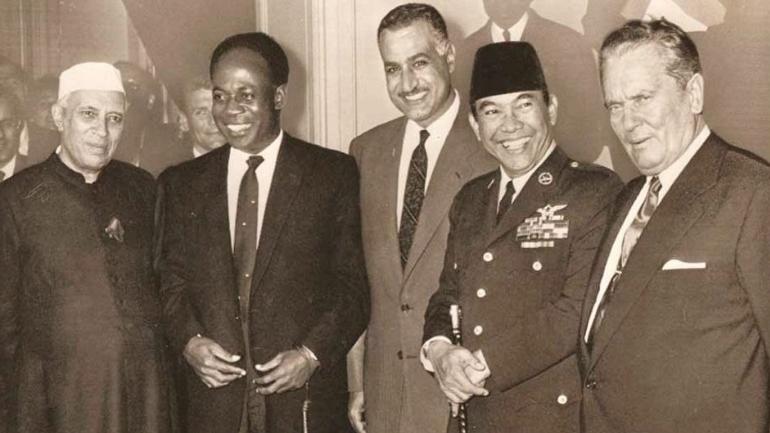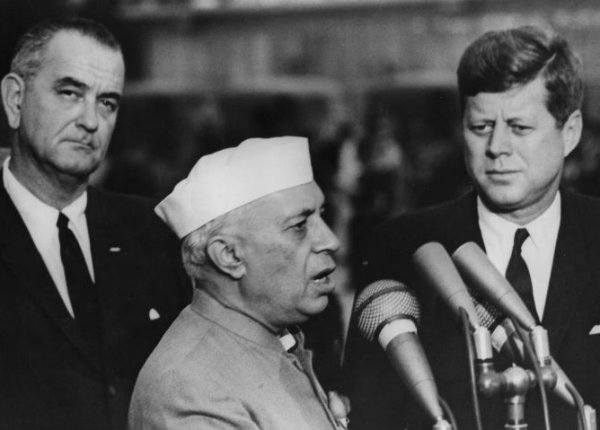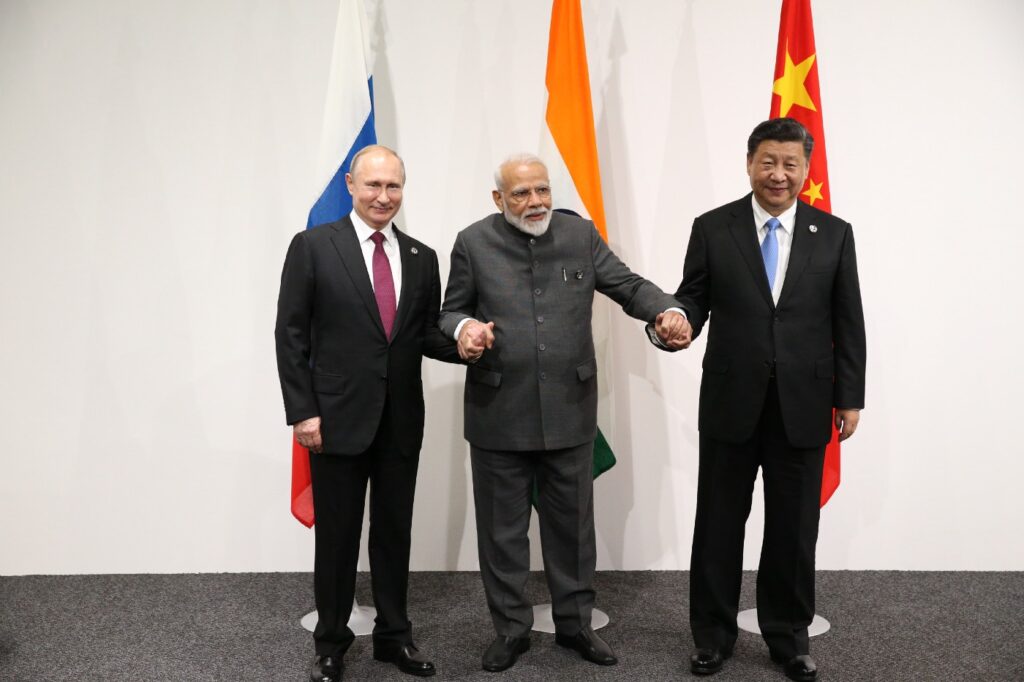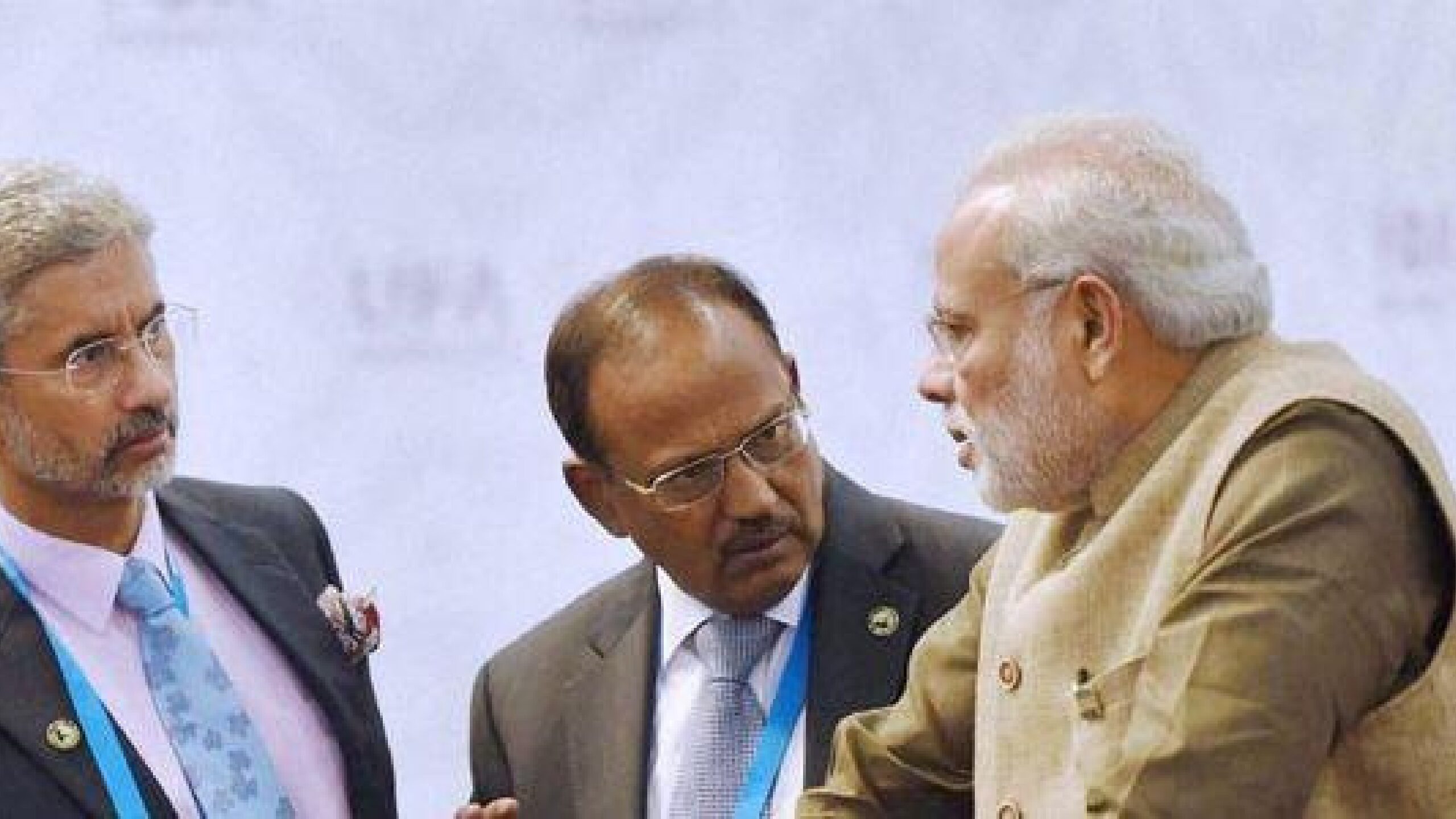Modi, Jaishankar and Ajit Doval brainstorming foreign policy

India’s foreign policy in the Nehruvian era (1946-64) was described as an era of “Optimistic non- alignment”. The rhetoric was strong as the main goal of India at that time was cementing sovereignty along with integrity and economy. Simultaneously, yet another goal also had emerged as very important. It was to position India as a pathfinder and a leader for the third world solidarity. Thus, Nehru was dreaming of walking between the two power blocks which emerged after the second world war, namely, the west headed by the US and the eastern block led by Soviet Union. These two countries were highly polarised super powers.
Also read: Tall Agenda for the World Order
Nehru was willing to align with the US
In the early stages of foreign policy formulation the Pro- American or Anti- American arguments in the India’s foreign policy did not have much weight to carry. Let us go back in time and retrospect. Nehru in 1940’s was quite uncertain about “non-alignment” and history tells us that he was willing to align with the US. The Kashmir situation was developing as a military issue soon after Nehru became the Prime Minister of India. His opponents held and even now maintain that Nehru was responsible for taking the Kashmir issue to UN. The powerful speeches of Nehru and presentations to portray himself as an ‘idealist’ and ‘socialist’ made people believe the same without any reservations. The contemporary developments of the times were such that the situation warranted a different path to be treated by India. However, historians tell us that the understanding of Nehru was erroneous, soft paddling with the socialist block.
also read: STRANGE PREDICAMENT OF CONGRESS PARTY
The US was non-committal

During President Truman’s period, the US was non-reactive and non-committal to India’s proposal to acquire military equipment and zeeps from the US. India showed inclinations to move closer to the US. Nehru’s government had to truly placate Truman’s administration telling that Nehru’s neutralism in foreign relations was not steadfast. In 1948 it was conveyed by India to US that under no circumstances, India would align with the Soviet Union in a war between superpowers.
Also read: Higher Education not merely a retail trade in knowledge
Kruschev made the difference
However, subsequent entry of Soviet Union into the foreign policy network and international affairs after Stalin’s death and the international arena. Kruschev made several efforts to knit east and the west which gave leverage to Nehru for pushing his policy of non-alignment. Thus, it was a tumultuous period between1955 to 61. Persistently India made efforts to acquire military equipment from US in preference to acquiring it from Soviet Union.
Also read: Getting Down to Serious Business of Food Security in Jammu & Kashmir
Giving asylum to Dalai Lama

India gave asylum to the Dalai Lama and other Tibetan supporters in 1959. That has appeased US, but strained the relations with China. Interestingly the non-alignment policy of Nehru did not suffer as US accepted it and Russia did not find fault in granting asylum to the Dalai Lama. But China was irked with India’s bold foreign policy initiatives and made China to declare war against India in 1961.
The sailing of foreign policy has been smooth there after including closer ties with the US, and at the same time keeping friendly relations with Russia.
Also read: “MIDDLE-PATH WAY”IS THE BEST APPROACH
From non-alignment to Multi-alignment
Current Russia- Ukrariane war brought the Indian policy of non-alignment under the spotlight once again. Biden expressed his reservations for India engaging in ‘tight rope walking’ and exhibiting a ‘shakey’ pattern. Interestingly, India continued with the undercurrents of the policy of non-alignment right from Nehru who was believed a socialist to now Modi a rightist. Hence the ‘non-alignment’ policy of Nehru or ‘multi- alignment’ policy of Modi in international diplomacy and fostering liberal ideas got their due recognition, even in the current flux.
How will the world order change?

It is to be seen how the World order changes in the present context and the pressures exerted on India by US to choose one path or other would shape the future foreign policy of India. In the present context as usual US is pushing India from a different angle to fall in line with American Policy. The big brother is not sparing any opportunity to highlight India’s issues in his own style. The recent happenings in north India appeared in the US media and polities as human rights violations. India’s foreign minister aptly replied to the allegations. However, India certainly had to be on guard in the foreign diplomacy during the coming months. It all depends on Modi’s approaches and understanding of future challenges- China’s aggression, India’s defence and energy reliance on Russia and increasing focus of Western block on human rights issues in India all have to be taken into account. The durability of present, sanctions also cast on Russia for the long term, there by influence in shaping the future course of India’s action. These were considered as pull factors which anchor India’s strategic future. However, this does not mean a situation to antagonise the west and the US. These nations time and again supported India, though in their own interests. India in the past also had not spared expressing its strong opinion when it came to the US coalition war against Iran as “unacceptable”. Vajpayee Government went ahead conducting nuclear test and Manmohan Singh refused to toe line with the US in the subsequent periods.
Also read: Buckling down community healthcare with CHMs and MHLPs
Assertion of strategic autonomy
India was expressing clearly its course of action maintaining the non-alignment policy eve since Nehru’s time and also marinated sound bilateral relations with all countries. In this background India can come out of the present situation for the sake of principle and firmly decry Russia’s invasion of Ukraine and at the same time maintain its bilateral relations with both Russia and US. Assertion of strategic autonomy in democracy has no meaning unless it is expressed without fear. Thus choosing of the middle path and maintaining non-alignment policy are crucial for India’s tightrope walking in the international relations. That is what India seems to be doing currently.
Also read: Petrol : Price, Policy & Politics




